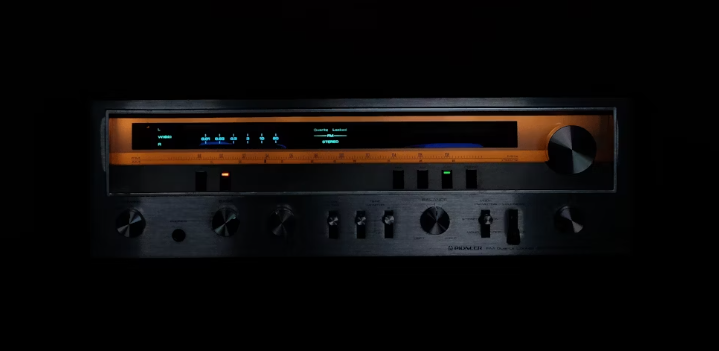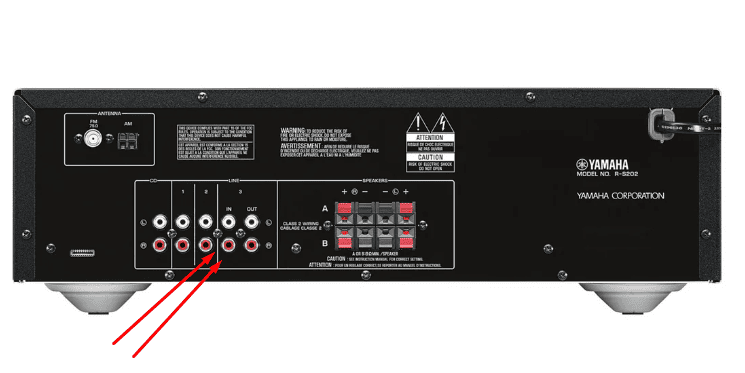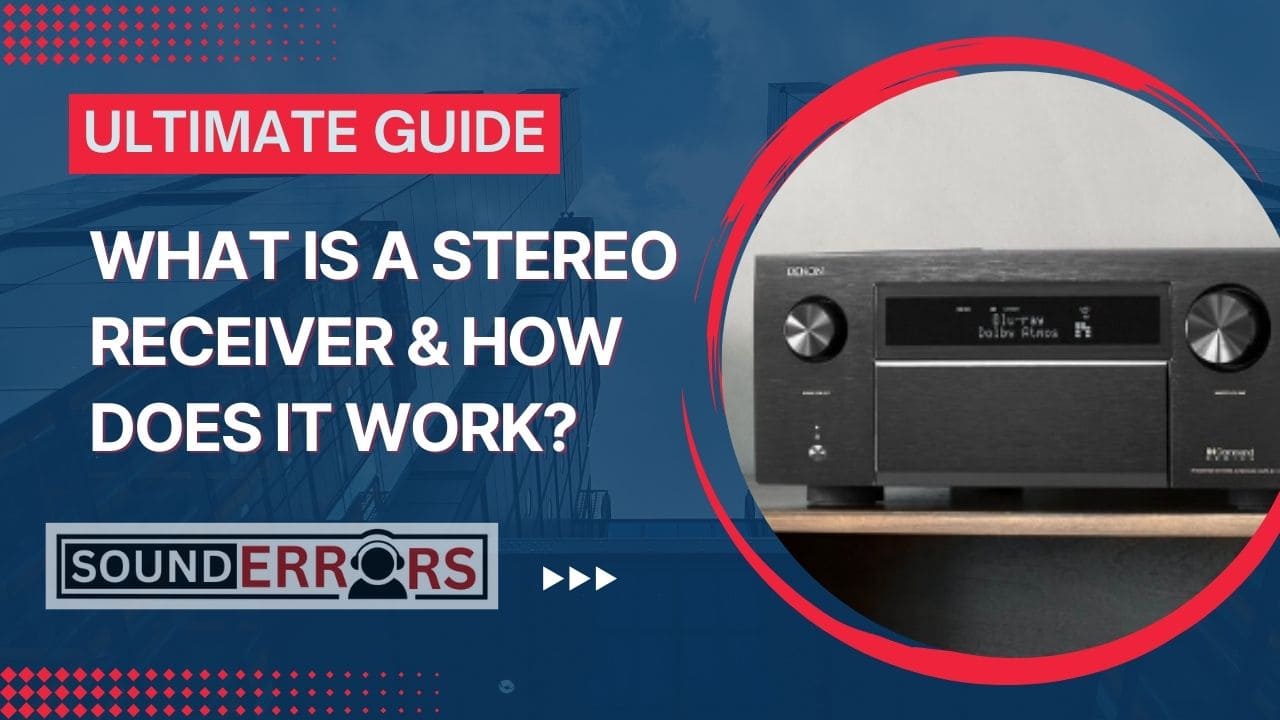This Post may contain affiliate links, when you purchase through links on our site, we may earn an affiliate commission at no extra cost to you. Here’s how it works.
The stereo receiver plays a crucial role, often serving as the main part of a sound system. Understanding stereo receivers is essential, Before having it. You need to know about stereo receivers and functions to choose the right one.
Table of Contents
ToggleWhat Is a Stereo Receiver?
A stereo receiver is an electronic device that amplifies audio signals and allows you to control various audio sources. It connects multiple components such as speakers, CD players, turntables, and streaming devices. Typically, a stereo receiver will combine the functionality of a radio tuner, preamplifier, and power amplifier into a single unit.

Key Components of a Stereo Receiver
- Pre-amplifier: This component boosts low-level audio signals from various sources to a level suitable for amplification.
- Power Amplifier: This increases the power of the audio signal, allowing it to drive the speakers effectively.
- Tuner: Most stereo receivers include a built-in radio tuner, allowing users to listen to AM and FM radio stations.
- Input/Output Ports: Stereo receivers come with various input ports to connect different audio sources.
- Output Ports: Stereo receivers come with output ports to connect to speakers or other audio devices.
- Control Interface: Receivers typically feature a front panel with knobs and buttons, and many modern units come with remote control and smartphone app compatibility.
What Does a Stereo Receiver Do?
The primary function of a stereo receiver is to manage and amplify audio signals from various sources. Here we discussed all the main tasks it performs:
1. Audio Source:
A stereo receiver allows you to switch between different audio sources seamlessly. Whether you want to listen to stream music from your smartphone or tune into the radio, the receiver makes it easy to select the desired input.

2. Signal Processing:
Many receivers offer built-in digital signal processing (DSP) capabilities, which can enhance the audio experience. Features like equalization, surround sound processing, and sound field effects can improve the listening experience.
3. Amplification:
The receiver amplifies audio signals to ensure that they can drive speakers effectively. This is crucial for achieving the desired volume levels and sound quality.
4. Tuning Radio Stations:
With a built-in tuner, a stereo receiver enables users to listen to their favorite radio stations, often with presets for easy access to frequently listened-to channels.
5. Home Networking:
Modern stereo receivers often come equipped with Wi-Fi or Bluetooth capabilities, allowing for wireless streaming from various devices.
Receiver vs. Amplifier: Sound Quality
When discussing stereo receivers, it’s essential to differentiate between a receiver and an amplifier. It may seem like the same but represents different functions.
Understanding the Amplifier and Receiver
- Amplifier:
An amplifier’s sole purpose is to boost audio signals for output to speakers. It can be either a standalone unit or a component within a stereo receiver. High-end amplifiers are designed specifically for superior sound quality and enhance fidelity, dynamic range, and clarity.
- Receiver
A receiver combines multiple functions (including amplification) in one unit. While receivers can provide decent sound quality, especially mid-range models, they may not always match the performance of high-end standalone amplifiers.
Sound Quality Considerations
- Power Rating: The wattage of a receiver or amplifier affects its ability to drive speakers efficiently. Higher wattage typically results in more headroom, allowing for clearer sound at higher volumes.
- Signal-to-Noise Ratio (SNR): A higher SNR means that the audio signal is clearer relative to background noise. Aim for a receiver or amplifier with an SNR of at least 80 dB for optimal performance.
- Damping Factor: This specification measures the amplifier’s ability to control speaker movement, influencing the overall sound quality. A higher damping factor generally results in a tighter bass response.
Finally, I want to say that choosing one of them is depends on your budget and personal preferences.
How to Choose a High-Quality Stereo Receiver
Choosing the right stereo receiver can be a daunting task given the multitude of options available. Here are some key factors to consider when selecting a high-quality receiver:
1. Audio Quality: Listen to the receiver before purchasing, if possible. Pay attention to clarity, dynamic range, and overall sound quality. Research online reviews and expert recommendations to find models known for their audio fidelity.
2. Power Requirements: Consider the power requirements of your speakers. Ensure the receiver’s output power matches or exceeds the speakers’ ratings.
3. Connectivity Options: Evaluate your current and future audio sources. Look for a receiver with various inputs, including HDMI, optical, RCA, and USB, to accommodate different devices. Wireless connectivity options (Bluetooth, Wi-Fi) are also worth considering for streaming capabilities.
4. Ease of Use: Check the user interface and remote control features. A receiver that’s easy to navigate will enhance your overall experience.
5. Brand Reputation and Warranty: A reputable brand known for its high-quality audio equipment.
6. Budget: Set a budget and try to find the best model within that range. While higher-priced models often offer better sound quality and features, many mid-range receivers provide excellent performance without breaking the bank.
What Is a 4-Channel Stereo Receiver?
A 4-channel stereo receiver refers to a type of audio receiver designed to support four separate audio channels. Compared to the traditional Stereo setup, it performs better.
Benefits of 4-Channel Receivers
- Enhanced Soundstage: With two pairs of speakers, a 4-channel receiver can create a wider soundstage, providing a more realistic and enveloping audio experience.
- Flexible Speaker Placement: Users can position speakers in different areas of a room, optimizing the listening environment for larger spaces.
- Multi-Room Capability: Some 4-channel receivers can drive speakers in multiple rooms, allowing for synchronized or independent audio playback in different areas of your home.
- Home Theater Integration: While primarily designed for stereo audio, many 4-channel receivers can also support surround sound systems, making them suitable for home theater applications.
Considerations When Using a 4-Channel Receiver
- Speaker Compatibility: Ensure that your speakers are compatible with the receiver’s power output and impedance ratings for optimal performance.
- Configuration: Properly configuring the receiver and speakers is essential for achieving the best sound quality. Adjusting settings such as speaker distance, level, and crossover points can greatly enhance your listening experience.
- Use Cases: Consider how you plan to use the receiver. If you primarily listen to music, a 4-channel receiver can enhance the experience. However, for dedicated home theater setups, a more complex multi-channel receiver may be a better choice.
Conclusion:
A stereo receiver is a vital component of any audio system, serving as the bridge between various audio sources and speakers. As technology continues to evolve, the options for stereo receivers will only expand, making it an exciting time for audio enthusiasts. With this guide, you now have a solid foundation to make informed decisions in your audio journey.
